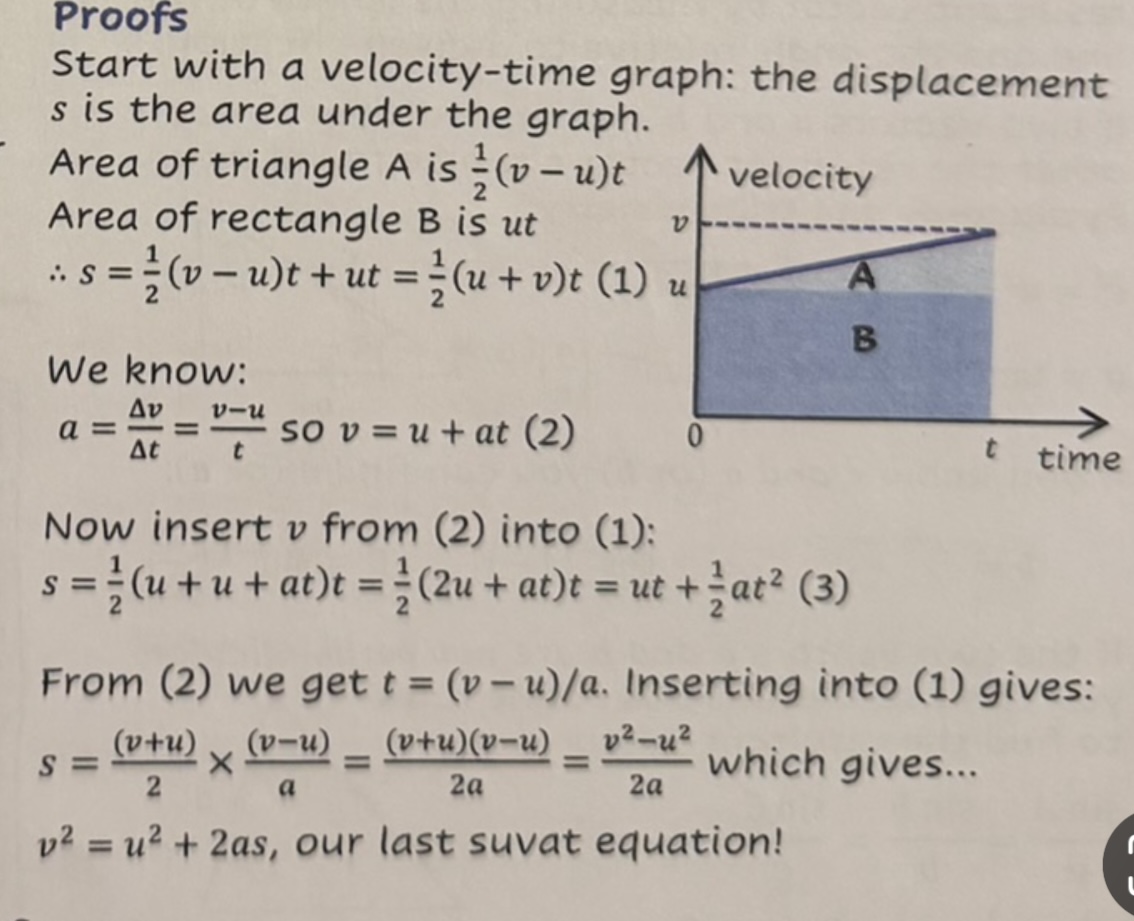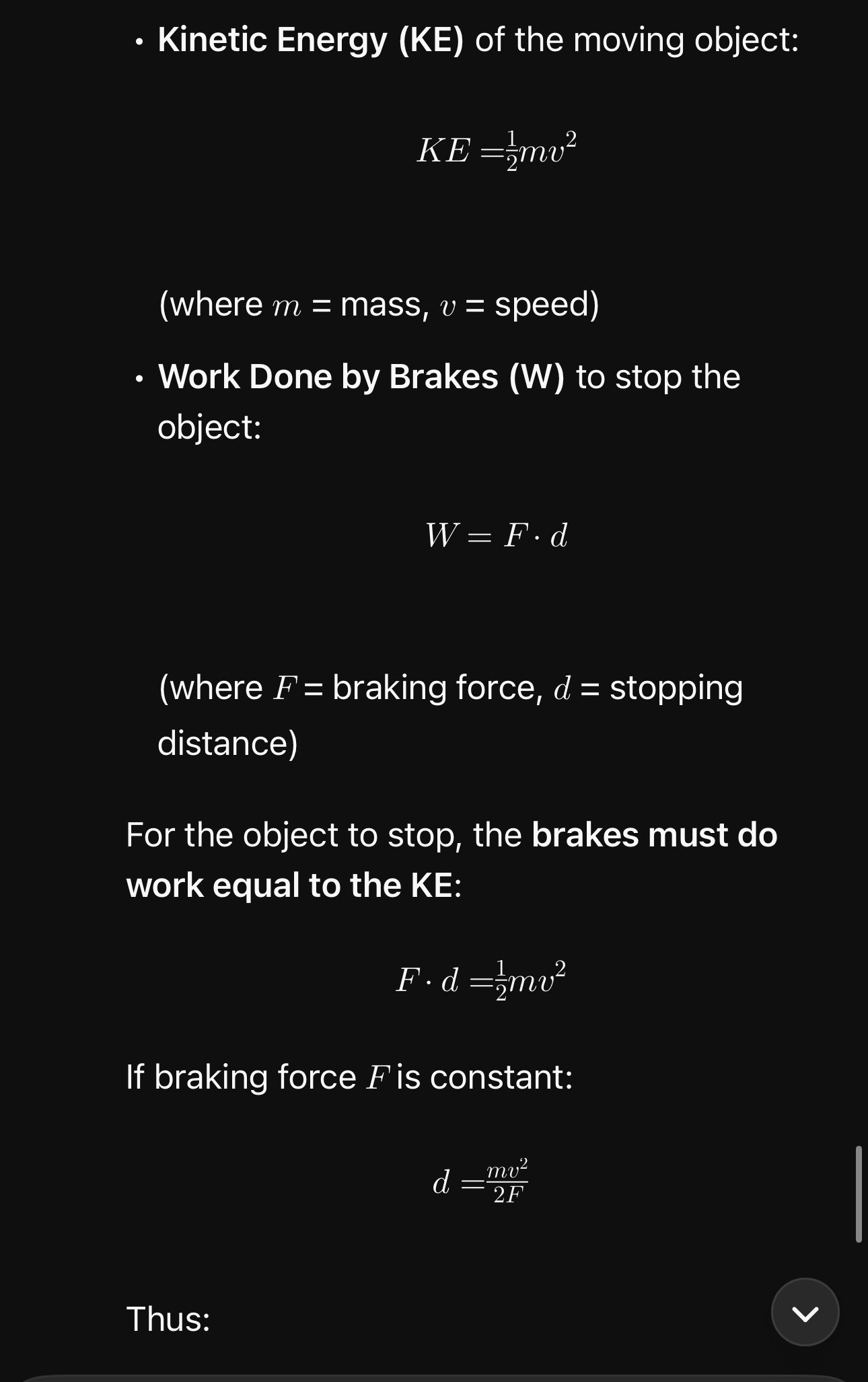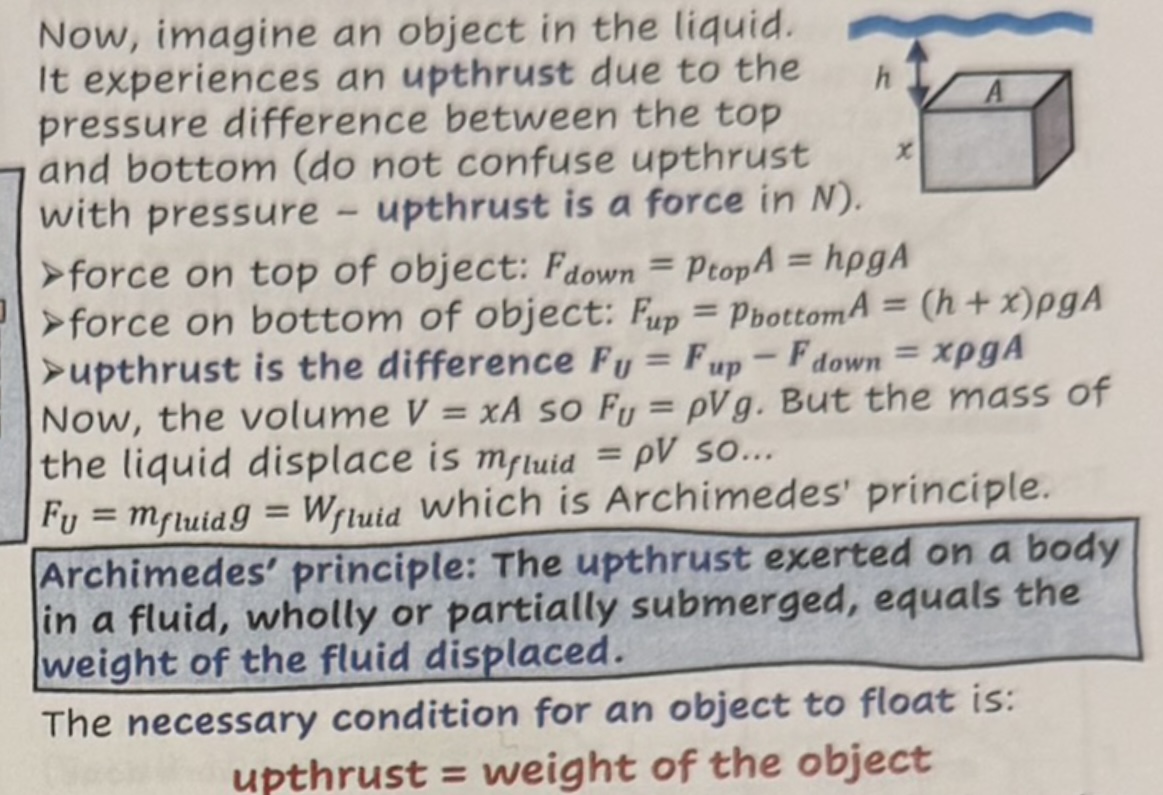Physics Year 1 Equations
1/126
There's no tags or description
Looks like no tags are added yet.
Name | Mastery | Learn | Test | Matching | Spaced |
|---|
No study sessions yet.
127 Terms
1 mile
1600m
1 tonne
1000kg
Absolute uncertainty
Range/2
Percentage uncertainty
(Absolute uncertainty x 100)/mean value
Uncertainty of addition/subtraction
Add absolute uncertainties
Uncertainties of multiplication/division
Add %uncertainties and use result to find absolute
Uncertainties of raising to a power of n
Multiply %uncertainty by n
%uncertainty of gradient
(Best gradient-worst gradient)x100/best gradient
%uncertainty in y-intercept
(Best y-int. - worst y-int.)x100/ best y-int.
Typical walking speed estimate
1m/s
Typical running speed
5m/s
Typical cycling speed
7m/s
Typical car speed
20m/s
Typical train speed
50m/s
Typical height of person
1.8m
Typical mass of car
1000kg
Atoms in 1g
6.022×10²³
Speed v
Change in displacement s / time taken t
Acceleration a
Change in velocity v / time taken t
Area under velocity time graph
Displacement
Area under velocity time graph
Change in velocity
Suvat: s
s = ut + 0.5at²
Suvat: v²
v² = 2as + u²
Suvat: a
a = (v-u)/t
Suvat: s
0.5(v+u)t
Suvat: s
vt - 0.5at²
Suvat proof

Thinking distance
Speed x reaction time
Braking distance
-u²/2a
Stopping distance
Thinking distance + braking distance
Weight
mg(9.81)
Stopping distance and velocity relationship
d directly proportional to v²

Drag force and velocity relationship
Drag force is directly proportional to v²
Drag force and cross-sectional area relationship
Drag force is directly proportional to area
EXTRA: drag force equation with drag coefficient
0.5 x density x v² x drag coefficient x A
Acceleration due to drag force
a = F/m
a = (W-drag force)/m
a = (mg - drag force)/m
a = g - (drag force/m) < g
Moment M
Force, F x perpendicular distance of line of force of action to pivot, x
Torque of couple

Density p
Mass / Volume
Pressure P
Normal force / Area
Pressure at depth h from height of liquid column
hpg (depth x density x gravity)

Upthrust
Upthrust = pVg (Upthrust = weight of object)

Work done WD
Force F x distance moved in direction of force x
Area under force-distance graph
Work done
KE
0.5mv²
Derivation of KE
Object accelerates from rest to velocity v
From suvat, v² = 2as + u², s = v²/2a
W.D is Fs, so KE=Fs, so KE = ma x v²/2a = 0.5mv²
GPE
mgh
Power
W.D/t
Power, force, velocity equation derivation
ONLY USE WHEN FORCE NEEDED TO MAINTAIN CONSTANT SPEED
P=WD/t
= Fx/t
= Fv
Relationship between P and v
Since drag force is directly proportional to v² and at constant speed, F=drag force and so P= drag force x v, power is directly proportional to v³
Efficiency
Useful output energy/total input energy
OR
1 - wasted energy/total input energy
Hooke’s Law: F=
kx
Gradient of force extension graph
k
Total k of springs in series
1/kT is equal to 1/k1 + 1/k2 + 1/k3 …
Total k of springs in parallel
kT = k1 + k2 …
Elastic potential energy
0.5ke²
Area under force extension graph
Elastic potential energy
EPE derivation
Hooke’s Law force-extension area under graph = 0.5 Fx = 0.5 kxx = 0.5 kx²
Tensile stress (unit Pa)
Force / cross-sectional area
Tensile stress (dimensionless)
Extension / original length
Young’s Modulus (Pa or Nm^-2)
Tensile stress/ Tensile strain
ONLY applies to linear part of graph
Connection between Young’s Modulus and k
Young’s modulus E = (F/A) / (x/L) = (F/x) x (L/A)
F = (EA/L)x = kx
Energy Density
Energy/volume = 0.5Fx/AL= 0.5 (F/A) / (x/L) = 0.5 x stress x strain
Force on object if mass is constant
F= (mv-mu)/t = m(v-u)/t = ma
Linear momentum (kgms^-1)
Mass x velocity
Force and momentum relationship equation
Since force is directly proportional to rate of change of momentum (Newton’s 2nd Law), F= k(change in momentum)/t, but k happens to equal 1 so
F= change in momentum/ time taken
Impulse (Ns)
Force x time taken = change in momentum
Area under force-time graph
Change in momentum (impulse)
For momentum diagrams, conservation of momentum applies to each direction independently
Elastic collision
Total KE before = Total KE after
Suggest how F= change in momentum/time can be used to enhance performance of sportspeople
By increasing time taken, smaller force used to produce same change in momentum. For ball to move away at fastest velocity, must keep in contact with ball for as long as possible. Can in tease momentum (and this speed) for given force
e
1.6 × 10^-19 C
Q
± ne, where n is no. of e- added/removed
I (current)
Change in Q/ change in t
1A is how many e-
6.25 × 10^18
Kirchhoff’s 1st Law
Sum of I in = Sum of I out
Mean Drift Velocity
I = Anev (I go to ANE Fast for my jaw)
From mean drift velocity, relationship between A and v
If we change A, we know from K’s first law I doesnt change, and n and e are constants
Cancelling terms gives A1V1 = A2V2
Mass of e-
9.11 × 10^-31
Potential difference V
W.D/Q
Cathode ray tube W.D of e-
eV = 0.5mv²
From:
w.d in accelerating e- is eV (from V=W.D/Q)
KE of e- =0.5mv²
Velocity of e- in electron gun
v= root (2eV/m)
Resistance
V/I
Resistivity p
R = pL/A
R is resistance in ohms
p is resistivity in ohmic metre (ohm m)
L is length of wire
A is cross sectional area
How to conclude after proving an equation is homogeneous
LHS = RHS therefore homogeneous
All power equations
P=W/t
P=IV
P=I²R
P=V²/R
P=QV/t
Work done related to I and V equation
W=ItV
Cost of electricity
No. of kWh x unit cost
Kirchhoff’s 2nd Law
Sum of p.ds = sum of emfs
Emf and internal resistance equation
Emf = terminal p.d + lost volts
= V + Ir
If circuit resistance is R, what is emf and internal resistance equation
V = IR so from E=V+Ir,
E=I(R+r)
Can arrange it as equation of line:
V= -Ir + E
Power, emf and internal resistance relationship
P = I²R
I = E/(R+r)
P= E²R/ (R+r)²
Potential Dividers Equation
V{out} = V{in} ( R{2} / [R{1} + R{2}] )
Wave speed v
Wavelength x frequency
Wave frequency
1/T
Equation if sinusoidal wave with amplitude A
y = A sin( kx - wt) for waves moving to right
y = A sin( kx + wt) for waves moving to left
k= 2pi/wavelength
w= 2pi/Time period
Result for superposition of 2 identical waves moving in opposite directions
y = 2A sin(kx) cos(wt)
As time t evolves, cost (wt) oscillated between +1 and -1 so max. displacement from any point x are:
y max. = +2A sin(kx)
Y min. = -2A sin(kx)
Phase Difference
360x/wavelength - in degrees
2pi x/wavelength - in radians
Intensity of waves
Power/surface area
Surface area usually for sphere, so:
Power/4pi r²
Relationship between intensity and amplitude
Since avg. speed of oscillations proportional to amplitude, and KE = 0.5mv³, KE is proportional to amplitude² hence:
Intensity is directly proportional to amplitude²
Because: when waves spread, Intensity drops as energy become more spread out and amplitude decreases